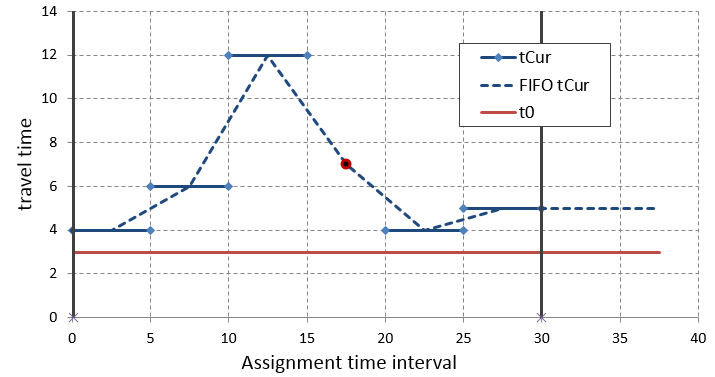The following section describes how the travel times are calculated as component of the path costs. Here the term path costs is used as a synonym for impedance. Path costs are used for route search and demand distribution (volume balancing) across routes.
The travel times are averaged over the travel time interval defined in the assignment parameters. The assignment of travel times refers to the point in time when a vehicle enters a network object. Based on this data, a travel time function is defined that allows for allocation of the averaged travel times of a sampling point in the middle of an interval. In Illustration 143, the averaged travel times are shown as tCur for each travel time interval. The average travel times for each point in time of the assignment period are interpolated linearly between the values (FIFO tCur). For the first half of the first travel time interval, the data of the first sampling point is used. From the second half of the last travel time interval, the data of the last sampling point is used.

Illustration 143: Calculating travel times over the assignment period
The travel times on links are separated by transport system and turn direction at the end of the link. This, for instance, allows you to account for the fact that left turns with an exclusive left-turn lane (right-hand traffic) often have longer wait times than straight turns.
If no data is available for a travel time interval, the travel time is calculated as follows:
Max (travel time from last travel time interval - travel time interval duration, t0)
This ensures compliance with the FIFO rule, i.e. the travel time is not reduced if a vehicle waits or takes detours. In Illustration 143, this is shown for the sampling point at the time 17.5.

